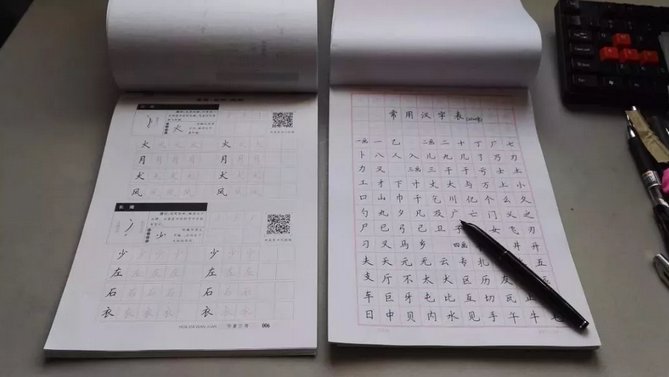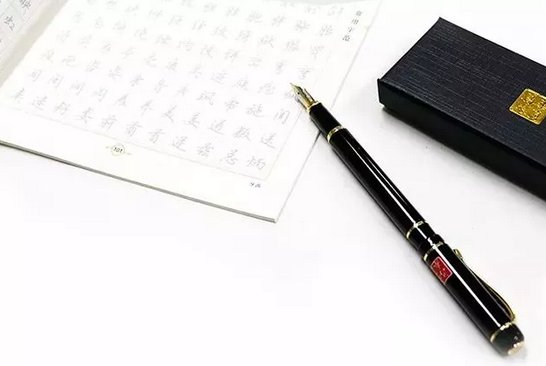For junior high school students, whether it is a daily test or an exam, the quality of writing will affect their test scores to a certain extent, so everyone must seize the time to quickly master the skills of practicing calligraphy. So, what is the best way for junior high school students to practice calligraphy? Is there any effective method?

In fact, for junior high school students, the handwriting has not yet been fully formed. In your spare time, according to your own writing habits, you can buy copybooks in block letters and Xingkai, write rubbings first, and after a while, start copying and memorize the strokes of Chinese characters ( Memorize very important keywords). After you become more familiar with it, you can practice writing on paper without looking at the copybook. It doesn’t matter what you write. The important thing is to practice more. For example, you can copy while reading the newspaper. The content of the newspaper is relatively It allows you to practice many words that are not on the copybook. After a while, I believe you will get used to the writing method and the words you write will look good!

How can junior high school students practice calligraphy well?
As the saying goes, if you want to do your job well, you must first sharpen your tools. First, let’s talk about calligraphy tools.
Pencil: Suitable for beginners and children, it helps to express the thickness of strokes and develop the sharpness of the strokes.
Gel pen: cheap, easy to obtain, easy to control, 0.5 refill is preferred, 0.7 and 1.0 should be used with caution.
Fountain pen: It can best express the pauses of strokes and the rhythm of writing. However, the water output of the fountain pen is larger than that of ordinary pens, so you need to choose paper with a certain thickness for practice. It is recommended to use M tip.
Copybook: Choose a copybook that suits you, such as a stroke copybook, regular script, or running script. Beginners are recommended to use standard calligraphy copybooks, such as "Introduction to Regular Script" by Tian Yingzhang.
Copying paper: In the early stage of calligraphy practice, you can choose Tianzi grid or rice grid paper to make it easier to familiarize yourself with the structure of calligraphy. After a period of time, switch to ordinary graph paper or calligraphy work paper.

Practice calligraphy = "copy" + "lin"
Copy: Use tissue paper to cover the copybook to describe words, including tracing red, using grooved copybook, etc.
5 tips for practicing calligraphy
1. Practice calligraphy starting from strokes:
Only by practicing your strokes well and writing both vertical and horizontal strokes correctly can you lay a solid foundation for writing the whole character and writing works.
2. Compare your exercises: Collect your daily exercises and compare them every other week to find out your shortcomings and affirm your progress.
3. Don’t rush for success: writing is a step-by-step process that requires calmness and persistence in practice. It also takes time to transform the proficiency of writing into ordinary writing.
4. Make the words big: When writing a copy, the size of the words should be at least as big as the words on the copybook. If the characters are written too small, it is easy to miss the details. If the characters are written large, the structure will be clear at a glance, which will help to find problems in writing.
5. Practice for half an hour every day: In the early stage of calligraphy practice, you can choose Tianzi grid or rice grid paper to facilitate familiarity with the structure of calligraphy. After a period of time, switch to ordinary graph paper or calligraphy work paper.

Several issues that junior high school students should pay attention to when practicing calligraphy:
1. When practicing calligraphy, you should pay attention to the writing posture and the way to hold the pen: Since most middle school students now use ballpoint pens, I will take the ballpoint pen as an example to talk about the writing posture and the way to hold the pen:
When writing with a ballpoint pen, you must sit in a sitting position with your head upright, body straight, arms open, and feet secure. Since the words written by the ballpoint pen are small, the movement of the pen tip should be in the area with the best visual effect. Generally, the right hand holds the pen, and the position of the pen Slightly to the right.
The eyes are about 30 cm from the paper, and the chest is about 10 cm from the edge of the table. Stretch your arms naturally, with your forearms flat on the table; press the left and right sides of the penholder with the pads of your thumb and index finger respectively. The left side of the first joint of your middle finger is against the bottom of the penholder. Your ring finger and little finger are in turn against the middle finger and naturally bent into half. It is shaped like a clenched fist and plays the role of municipal control.
The distance from the point of contact between the thumb and the pen barrel to the tip of the pen is about 4 cm. The penholder leans against the tiger's mouth, forming an angle of 45-60 degrees with the paper. The smaller the word, the larger the angle. If you use a pen to write, you should also pay attention to the pen tip on the outside and the pen tongue on the inside. Let the middle seam of the pen tip touch the paper to ensure that The water is discharged evenly and the lines are smooth.
2. When practicing calligraphy, you must be calm, start and end well, and not be impatient and perfunctory; when writing, you must be meticulous and every stroke must be written realistically; when some people practice calligraphy, they like to finish at the end This kind of scribbling is a taboo in calligraphy practice. It not only damages the life of the pen tip, but also destroys the progress just made after practicing for a long time.
3. Don’t change fonts easily! You must have perseverance and perseverance when practicing calligraphy, and you must practice solid basic skills; you must persist in practicing calligraphy regularly, and you cannot be exposed to the cold for three days, fishing for three days, and drying the net for two days; Note: one day of practice, one day of practice, and one day of rest. Practice Tokkaku; after mastering the font structure, you can choose the font you like and keep practicing it, and don't change the font easily; because once you change the font, you have to practice from the beginning again!
We must learn to combine calligraphy with practice and writing. Some students write very well when practicing calligraphy, but they just mess up when doing homework. These students will never be able to practice calligraphy well. The calligraphy they have practiced is used in daily life. You should write as well as you do when you practice. Use one word after another, learn by using it, use it while learning. Only by combining learning and application can you practice your calligraphy well! For junior high school students, the greatest demand for exams is to focus on the practice of running script. When choosing copybooks, they can choose running script copybooks and practice more common characters, such as 100 commonly used characters, so that they can master the skills of practicing common characters faster.








